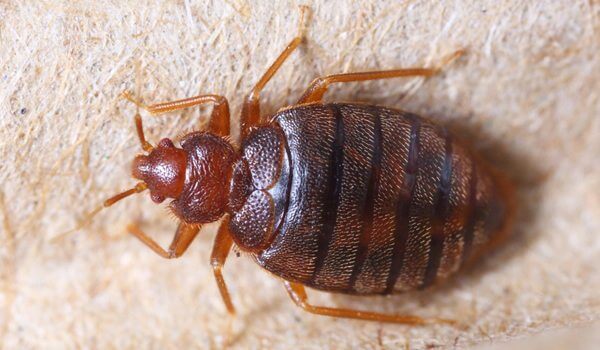Bed bugs have fed off human blood for more than 3,000 years and the parasites have only grown more pervasive in recent years.
Despite a dip in bed bug populations in the 1950s due to heavy use of DDT and other pesticides, infestations are now reported in all 50 states. According to survey results released earlier this year by the National Pest Management Association, 99.6 percent of pest management professionals across the country reported a bed bug infestation over the previous 12 months. And more than three-quarters of respondents said that bed bugs were the toughest pests they came up against.
As bed bugs strike dread and produce itchy welts in a growing number of people, scientists are racing to better understand what makes the insects tick with the goal of ultimately finding better ways to control them.
But even as refined guidelines emerge for how to avoid and treat bed bugs — including a new study that details the frigid temperatures needed to freeze bed bugs to death — it’s becoming clear that the blood-suckers won’t go down without a fight.
“Most bed bugs have multiple types of resistance to pesticides,” said Joshua Benoit, an entomologist at the University of Cincinnati. “Until someone develops a new chemical that serves as a very good pesticide that can also be safe enough to treat with inside houses, it’s going to be a while before we’re bed-bug free.”
Bed bugs are tiny, flat, reddish-brown insects that require warm blood meals to survive. They are hearty creatures, able to survive up to eight months between eating by settling into a quiescent state. And they reproduce quickly, making them extremely difficult to get rid of.
NEWS: Weaving a Nano-Web To Stop Bed Bugs
Two species of bed bugs are responsible for most infestations that affect people, according to the Centers for Disease Control and Prevention. And while the insects don’t carry diseases, they can cause sores, expensive property damage and major headaches for people who are unlucky enough to host colonies in their mattresses. Public health concerns include allergic reactions, secondary infections, depression, sleep-deprivation and anxiety.
In an attempt to get the upper hand, scientists have been looking for weaknesses in bed bug biology. One theoretical target is a type of symbiotic bacteria that lives inside the insects and produces B vitamins for their hosts. When researchers removed the bacteria from bed bugs, they reported in Proceedings of the National Academy of Sciences in 2010, the insects grew more slowly and became sterile.
Source: http://news.discovery.com/animals/insects/bed-bugs-proving-difficult-to-put-to-rest-131210.htm
About Brezden Pest Control – Brezden Pest Control was founded in Cayucos by John and Maria Brezden in 1980. As the business grew, it expanded to serve all of San Luis Obispo, Paso Robles, Los Osos, Cayucos, Cambria, Five Cities, Atascadero and Santa Maria. Professional pest control services which Brezden provides include dead animal removal, pest inspection, rodent control, and termite treatment. Visit the website andFacebook page or call 805-544-9446 for a free estimate or copy of the “Top 10 Reasons Customers Choose Brezden Pest Control.”

Oops! We could not locate your form.


